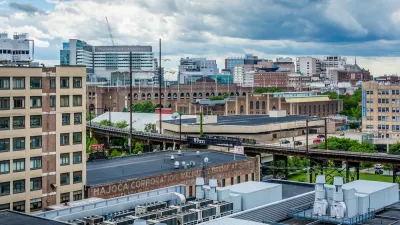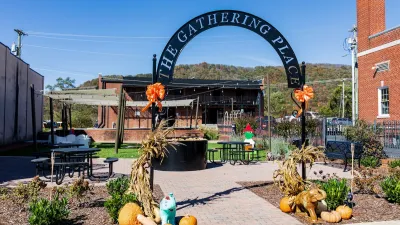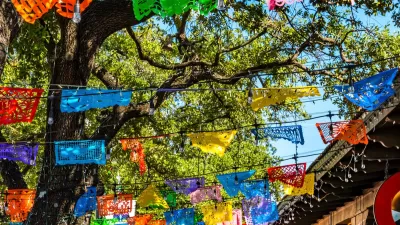How a preservation-based approach to redevelopment and urban design can prevent displacement and honor legacy communities.
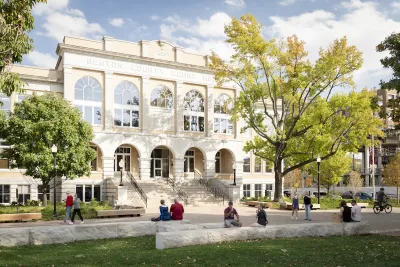
Place encapsulates layers upon layers — seen and unseen. Place is living and nonliving. Place is people, community, culture, memories, politics, nature … and every place is different, nuanced, and inspiring in its own right.
Across the United States, economic and population growth in many communities is fueled by the promise of a lower cost of living and a higher quality of life. However, this rapid growth can lead to haphazard development, public and private, that loses sight of cultural legacy and natural heritage. This Generica America can become visually indistinguishable from place to place, putting legacy communities and their stories at risk of displacement and erasure, especially communities where property and home values are lower and/or rental rates are high.
The American South and much of the United States have a troubled history of displacement and environmental injustices instigated by systemic racism over time. Many of these manifestations of bad public policy began during the Jim Crow era under the guise of urban renewal, and Native American and Indigenous communities have been enduring these issues since colonial times.
As these communities, often historic or worthy of historic designation, see rapid change on private land, public infrastructure upgrades follow. Since private land is a more complex avenue to address displacement and gentrification, the burden of capturing and celebrating place and memory and repairing past injustices is often left to the public realm.
Placekeeping is the process of preserving the culture, history, ecological landscape, and stories of a place while creating spaces that will meet the needs of the community for years to come. It incorporates the cultural memories that make up the community's social fabric into the built environment. As a counter to Placemaking, it isn’t about creating new spaces, it’s about embracing what has always been there. The goal for planners and community members alike is to accommodate growth while maintaining the essence of the region to create spaces that foster community engagement, keeping generic plans at bay. Whereas the public realm was once a weapon of monotony, racism, and displacement, today, the public realm can be a starting point to healing and honoring a sense of place.
Two examples, one in Raleigh and the other in Bentonville, reflect some strategies in the public realm that seek to avoid the erasure of culture, history, memory and place, to use the pubic realm to celebrate shared cultural (Raleigh) and natural (Bentonville) history and legacy.
Documenting the past to inspire the future: The South Park Heritage Trail in Raleigh, North Carolina
The South Park Heritage Trail (SPHT) will be an interactive cultural heritage trail over three miles long in the public right-of-way in Southeast Raleigh that honors and preserves the rich African American legacy of the South Park-East Raleigh neighborhood and surrounding areas. This initiative was born from decades of community advocacy, beginning with the South Park East Raleigh Neighborhood Association's (SPERNA) 2009 study. SPERNA developed this study through a multi-year workshop-driven partnership with North Carolina State University's College of Design and Linguistics Program. The project vision was crafted during the economic downturn of the Great Recession and has now witnessed rapid change, going from blighted vacant lots to new construction over most of the area.
For many years prior to the study, both SPERNA and neighborhood residents actively advocated for the evaluation, documentation, protection, and celebration of numerous sites significant to Raleigh's Black community. Preserving the history after feeling the devastation of displacement of neighborhoods and homes was an important driving force of their advocacy. This displacement originated in the rerouting of large road corridors over several decades, such as urban renewal projects that completely demolished communities like the Fourth Ward neighborhood and the widening of rerouting of Smithfield Rd, now Martin Luther King Jr. Boulevard.
The SPHT initiative gained significant momentum when Raleigh voters approved $12.3 million in funding through a 2022 Parks Bond for the John P. “Top” Greene Community Center and South Park Heritage Trail and before that, a 2014 bond investment in Chavis Park, Raleigh’s “Negro Park” during segregation that served visitors from the entire region and had fallen into disrepair. In 2023, a dedicated community advisory group was formed to ensure the planning process for SPHT represented the diverse stakeholders whose heritage this cultural landmark will celebrate for generations to come. The project entered its concept design phase in 2024 when the City of Raleigh partnered with Design Workshop to further develop the proposed trail route, document historical assets, facilitate four community workshops, coordinate with a North Carolina-based artist, and develop concept-level interpretive elements to showcase the neighborhood's profound impact on Raleigh's evolution.
The effort included adding historic events, objects, and memories collected through oral histories to a digital database of resources based on community input. This database helps track resources, provides content and inspiration for interpretive features, and serves as the foundation of a digital experience in parallel to the physical art, wayfinding, and signage elements that will honor the history of the community within the public streetscape and publicly owned adjacent land. Without a deep commitment from legacy community members and public officials, public realm improvements would have been devoid of placekeeping elements and missed a connection to the community of today, many of whom are new to the area.
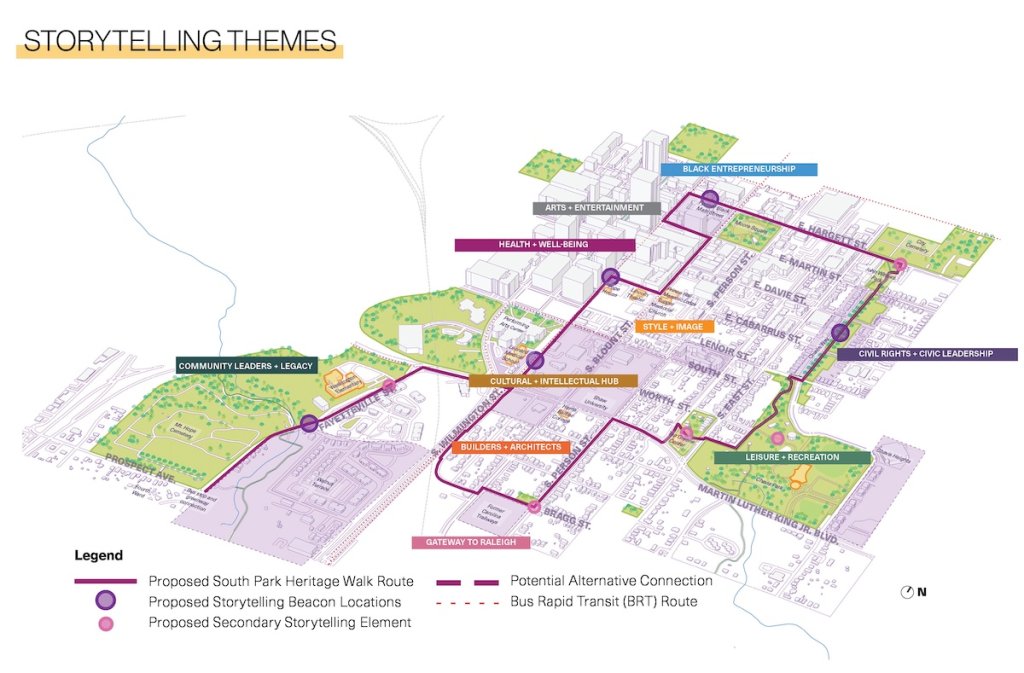
Placekeeping Bentonville: Honoring heritage while embracing growth
Bentonville, Arkansas, has experienced remarkable growth in recent years and is in the process of transforming from a small historic town to a bustling city. Placekeeping is crucial at this stage of change because it ensures that the city’s development respects and preserves the distinct cultural, historical, and environmental aspects that define its identity, even as it adapts to meet the demands of growth and contemporary design.
To understand a place, designers immersed themselves in the local context. In Bentonville, the landscape serves as a key connector between the site’s regional identity and its modern evolution. Paddling down the Buffalo River, riding the world-renowned mountain bike trails, and walking through the historic downtown all reveal the deep connection between the natural landscape and the built environment. These experiences highlight how the region’s geography shapes the town’s identity, grounding the modern developments in their natural context. The nearby Crystal Bridges Museum of American Art exemplifies this connection, where architect Moshe Safdie’s design blends contemporary art and architecture with the surrounding landscape. The museum’s use of native stone and seamless integration with the forest and water reinforces the idea that modern design can be in harmony with the region’s natural beauty, creating a bridge between Bentonville's rich history and its dynamic future.
During the planning and design for the future of downtown Bentonville and the redevelopment of the A Street Promenade, stakeholders emphasized the importance of creating a space that feels local to Bentonville, especially as the city navigates its growth. The design transforms the existing A Street roadway into a vibrant community promenade. The team incorporated feedback from the community to create a variety of small and large gathering spaces along the promenade, using key elements of the site design that reflect the cultural fabric of what defines Bentonville today: historic red brick in a gradient pattern, local sandstone walls and plazas, and a lush, native garden that extends from Crystal Bridges through the promenade. This garden offers seasonal displays of interest and provides substantial shade during the hot summer months, ensuring a welcoming and sustainable environment for all visitors.
Placekeeping is about maintaining a place’s essence while allowing it to evolve. In Bentonville, this means designing spaces that reflect both historical context and modern energy. By embracing placekeeping, we can ensure Bentonville’s identity is preserved and celebrated.
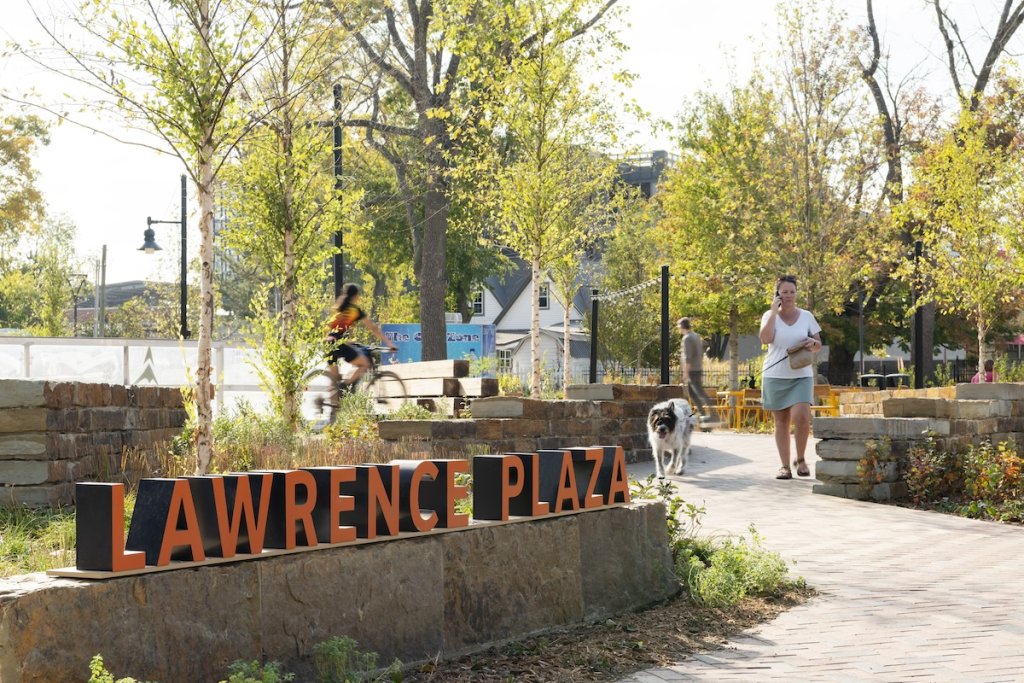
Once an agent for community displacement and disproportionately negative impact, and a driver for the proliferation of indistinct and generic design, today,planning and urban design can be a small part of repairing decades of injustices, disinvestment, and cultural monotony. The concept of placekeeping is a guiding principle and crucial pathway to honoring existing communities and their histories, natural history, and uniqueness, and offer a more thoughtful counterpoint to placemaking. Central to this approach is public inclusion and investment in the documentation of cultural and natural resources that hold meaning to the community, and creative opportunities to tell a community’s distinct history. In order to be successful, the process of planning and design, not just the tangible outcomes, must be inclusive, participatory, and meaningful.
Emily McCoy is based in Raleigh, North Carolina and Conners Ladner is based in Austin, Texas. Both are principals with Design Workshop.

Alabama: Trump Terminates Settlements for Black Communities Harmed By Raw Sewage
Trump deemed the landmark civil rights agreement “illegal DEI and environmental justice policy.”

Planetizen Federal Action Tracker
A weekly monitor of how Trump’s orders and actions are impacting planners and planning in America.

The 120 Year Old Tiny Home Villages That Sheltered San Francisco’s Earthquake Refugees
More than a century ago, San Francisco mobilized to house thousands of residents displaced by the 1906 earthquake. Could their strategy offer a model for the present?

Ken Jennings Launches Transit Web Series
The Jeopardy champ wants you to ride public transit.

BLM To Rescind Public Lands Rule
The change will downgrade conservation, once again putting federal land at risk for mining and other extractive uses.

Indy Neighborhood Group Builds Temporary Multi-Use Path
Community members, aided in part by funding from the city, repurposed a vehicle lane to create a protected bike and pedestrian path for the summer season.
Urban Design for Planners 1: Software Tools
This six-course series explores essential urban design concepts using open source software and equips planners with the tools they need to participate fully in the urban design process.
Planning for Universal Design
Learn the tools for implementing Universal Design in planning regulations.
Clanton & Associates, Inc.
Jessamine County Fiscal Court
Institute for Housing and Urban Development Studies (IHS)
City of Grandview
Harvard GSD Executive Education
Toledo-Lucas County Plan Commissions
Salt Lake City
NYU Wagner Graduate School of Public Service


























